Directed Research in Kenya
“How has climate change affected your daily activities in the last 10-15 years?” is one of many questions that SFS Kenya students gather answers to during Directed Research (DR). The majority people group in the areas surrounding our base, Kimana, are Maasai. For many Americans, Maasai may be the only people group they know of regarding Africa. For us, they are our neighbors, our staff, our guides, our interpreters, our friends. Traditionally, Maasai were semi-nomadic pastoralists. With climate change and land policy change, students discovered the majority of our neighbors are now agropastoralists. With the ability to own land, and the challenge of drought to raising cattle, Maasai spend more time and money investing in agriculture than they used to. How will this change their culture through the years? That is a question that will have to be answered another year.
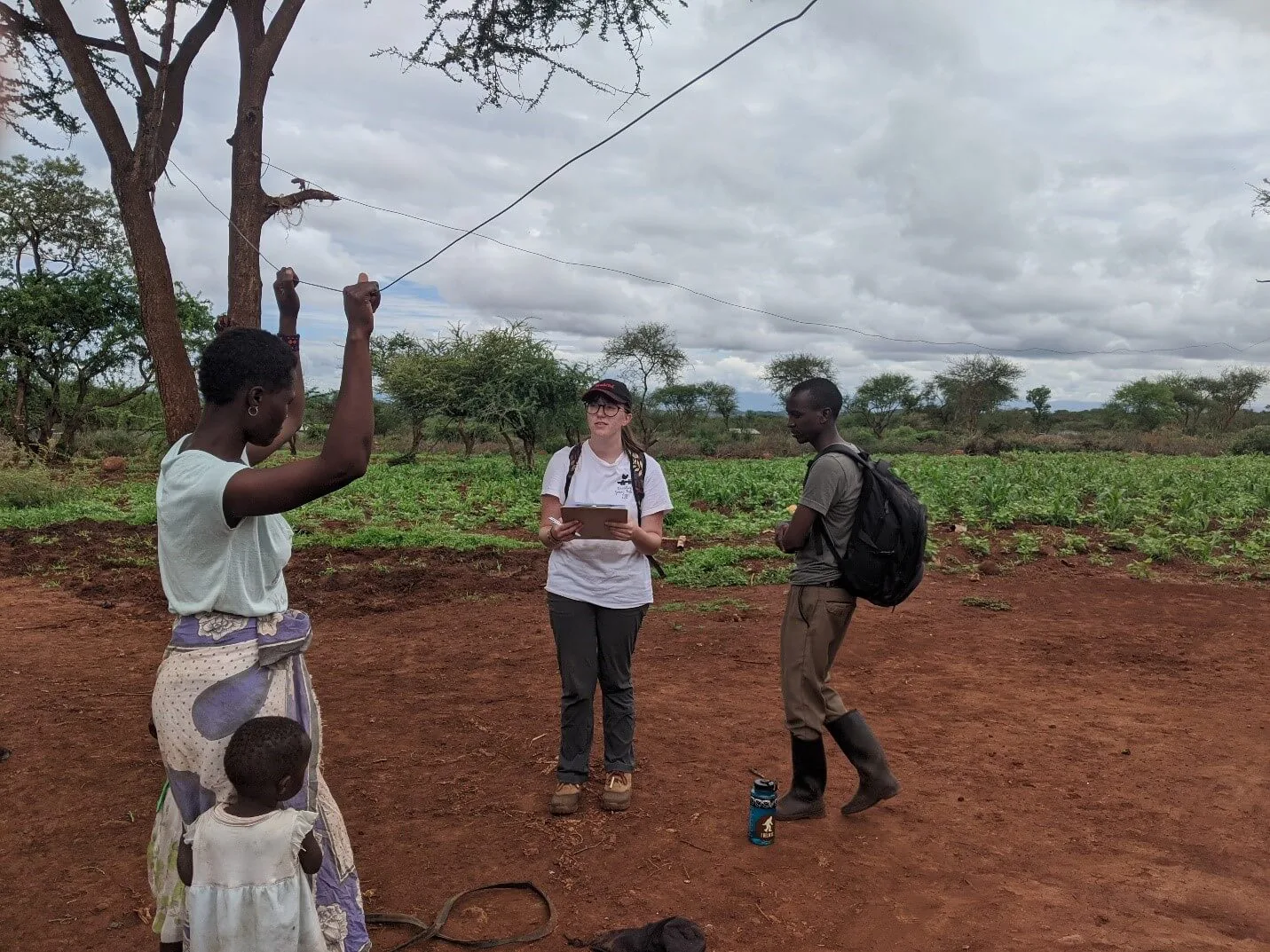
Student Emma Brentjens and her interpreter, Nelson, interview a woman about the impacts of climate change
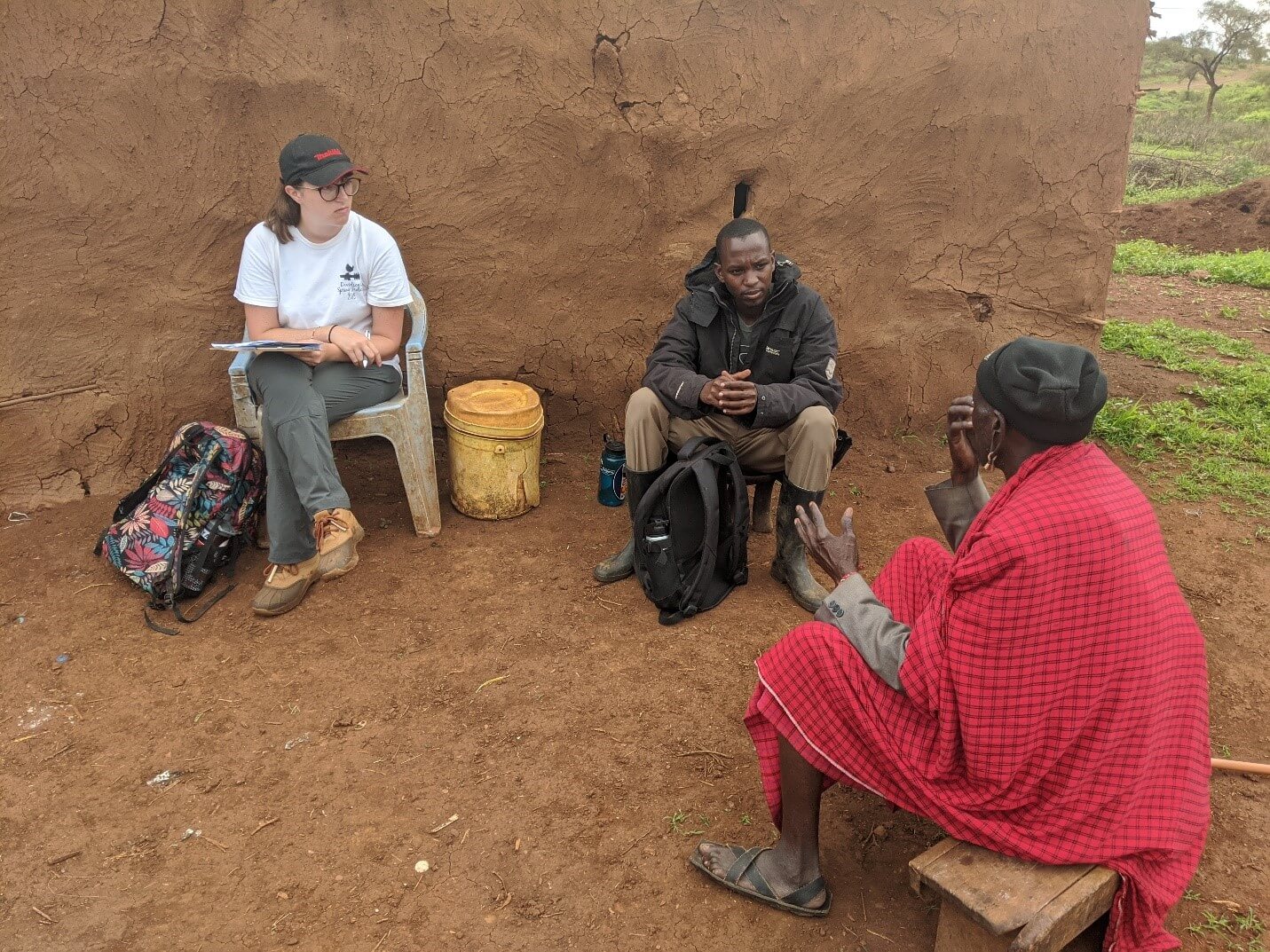
Student Emma Brentjens and her interpreter, Nelson, interview a man about the impacts of climate change
Two leopards, four cheetahs, the famous big tusker, Tim, wildebeest, over 200 bird species, 40 kinds of flora, and 20 species of butterflies. These are just some of the things that another group of students identified at the nearby Kimana Sanctuary for their DR. Using cameras and counts by car and on foot, students set out to identify every living thing in the sanctuary to include in the natural history guide that they will write for use on the sanctuary’s website and to be sold at the gate. One goal for DR is to produce tangible outcomes to give back to the community which hosts us.
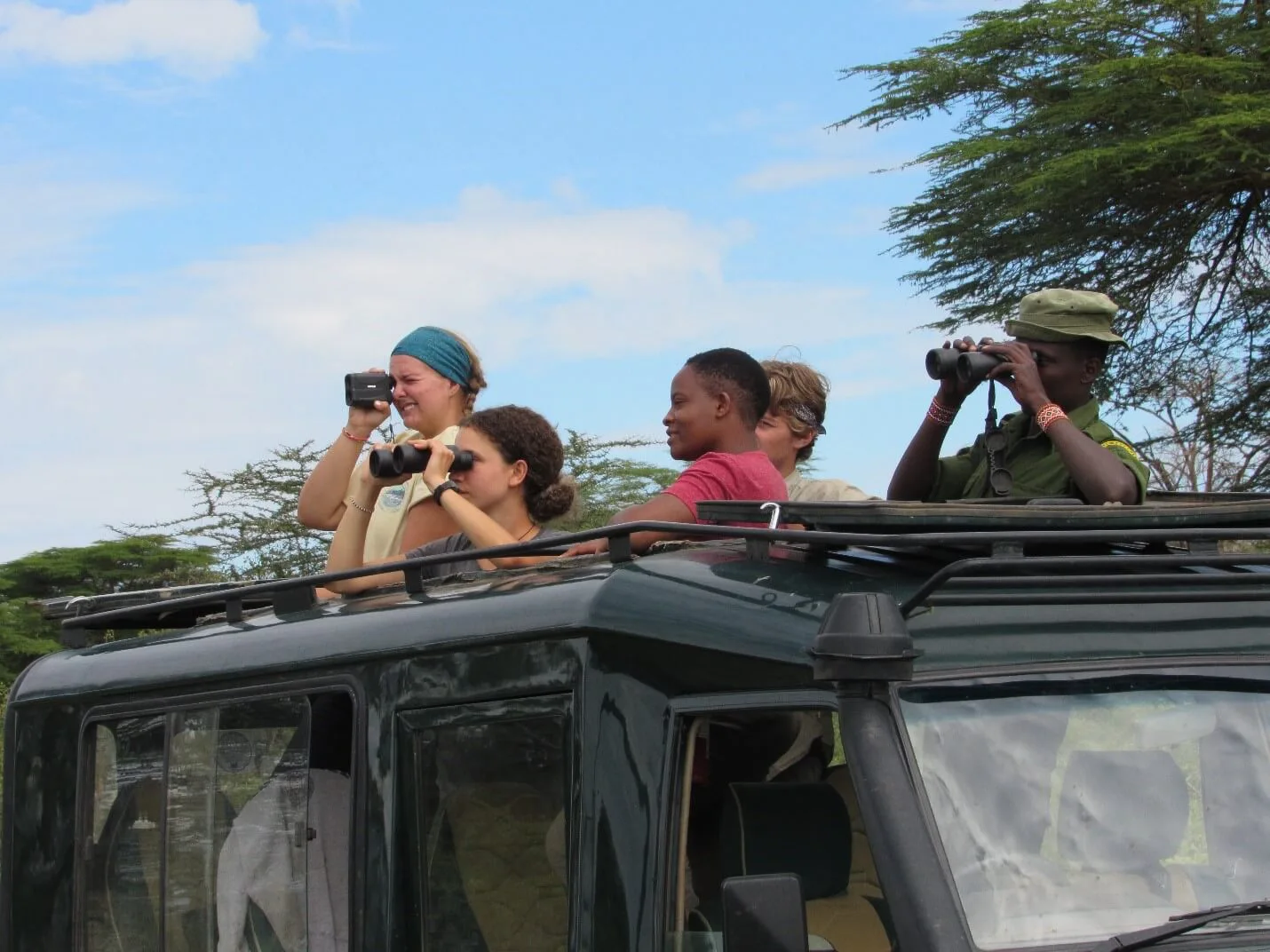
Students, along with Program Assistant, Mercy, and a Big Life Ranger identify animals in Kimana Sanctuary. Photo courtesy of John Kioko
“For the future it’s a really good thing. Having this kind of conservancy preserves it for our children. No one can sell it without everyone agreeing.” Our final group of students is analyzing the efficacy of the community-based conservation model using Kimana as a case study. Students interviewed board members, 28 community members, and held 4 focus group discussions, each with 10-13 people. They also had the opportunity to speak with board members and a representative of the organization Big Life, which manages the sanctuary now.
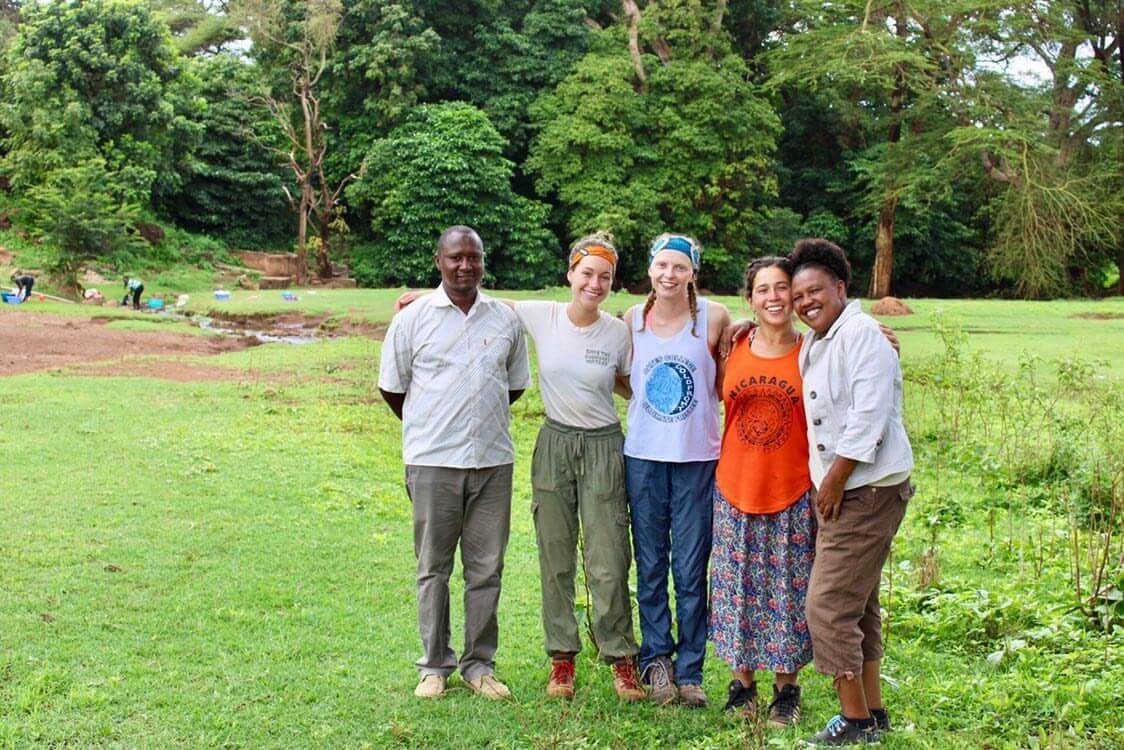
Students spend around 8 hours a day, 11 days straight with their interpreters. Photo courtesy of Moses Waema
Directed Research requires students to be up and heading to the field by 7:45 every morning, sometimes not returning until 5pm. It requires students to be resourceful and flexible, enduring getting stuck in the mud, holding interviews in vehicles through a downpour, and taking shelter in the home of a stranger to wait for rain to pass. It requires they work as a team to collect data, analyze the findings, and present their conclusions that will be translated into two languages for their community audience. In short, it requires a lot, but the reward is an unparalleled opportunity to conduct field research in an over-looked part of the world – something few other college students can say they did with their month of November.
Related Posts
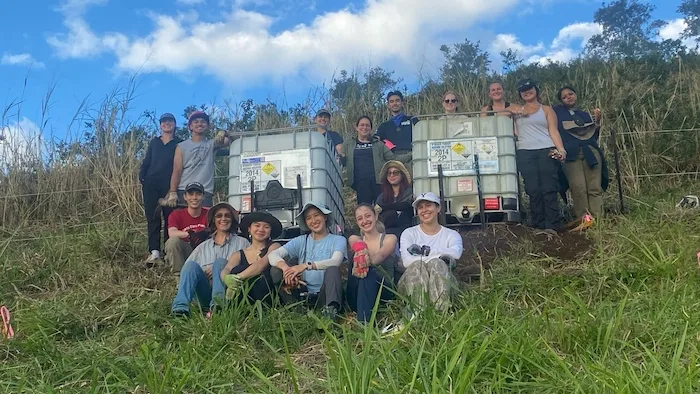
Restoration on a Cinder Cone: A Syntropic Story

